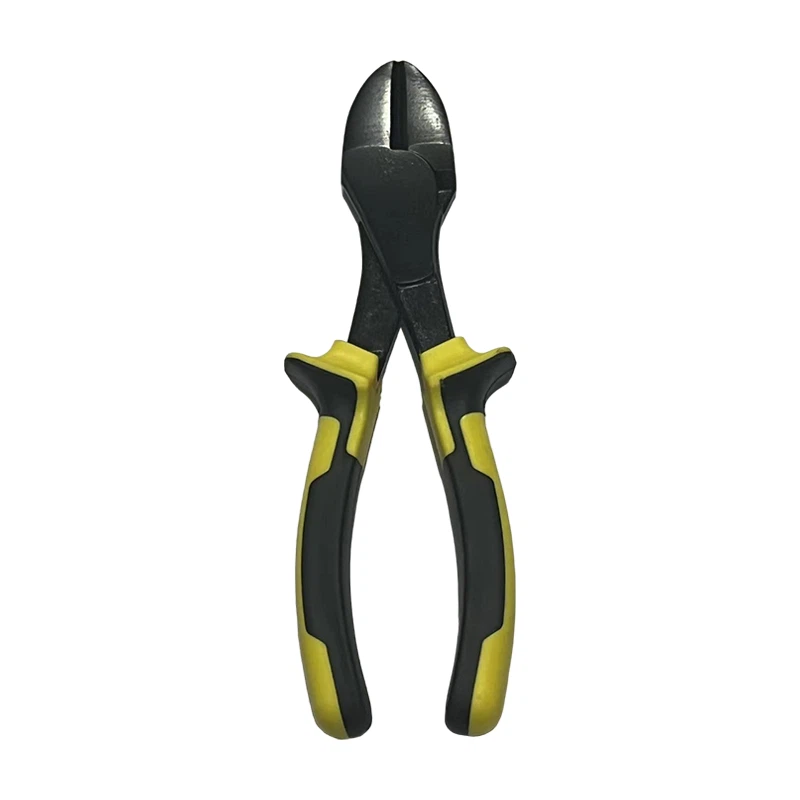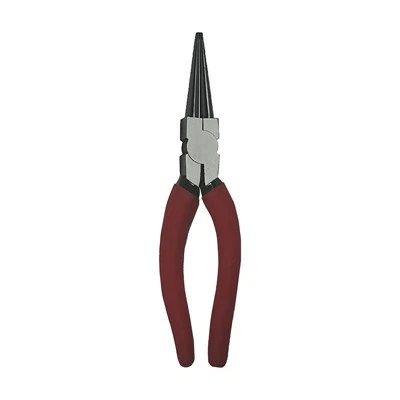Circlip pliers, those handy tools with a unique design for handling circlips, are a staple in many mechanical and industrial settings. But the question that often arises is whether they can be effectively used on textile machinery. As a supplier of high - quality circlip pliers, I've delved deep into this topic to provide a comprehensive answer.
Understanding Circlip Pliers
Circlip pliers are specialized tools designed to install and remove circlips, also known as snap rings. These rings are used to secure components on a shaft or in a housing, preventing axial movement. There are two main types of circlip pliers: internal and external. Internal circlip pliers are used to install or remove circlips that fit inside a bore, while external circlip pliers are for those that fit around a shaft.
The design of circlip pliers allows for precise control when working with circlips. They typically have long, thin jaws that can reach into tight spaces and apply the necessary force to open or close the circlip. The handles are often ergonomically designed to reduce hand fatigue during extended use.
Textile Machinery: A Complex Ecosystem
Textile machinery is a diverse field that encompasses a wide range of equipment used in the production of textiles. From spinning machines that convert fibers into yarn to weaving and knitting machines that transform yarn into fabric, each piece of equipment has its own unique set of components and requirements.
Textile machinery often contains a large number of small, delicate parts that need to be assembled and maintained. These parts are subject to high - speed operation, constant vibration, and exposure to various chemicals and fibers. As a result, the tools used in textile machinery maintenance must be able to handle these conditions without causing damage to the components.
Can Circlip Pliers Be Used on Textile Machinery?
The answer is yes, circlip pliers can be used on textile machinery, but with certain considerations.
Assembly and Disassembly of Components
Many textile machinery components are held in place by circlips. For example, in spinning machines, the rollers and gears may be secured with circlips. Circlip pliers are essential for the proper installation and removal of these circlips during assembly, disassembly, and maintenance processes. Their precise control allows technicians to work with the small and often hard - to - reach circlips without damaging the surrounding components.
Precision and Delicacy
Textile machinery components are often made of lightweight and delicate materials. The long, thin jaws of circlip pliers are ideal for working in tight spaces without applying excessive force. This precision is crucial to avoid bending or breaking the components, which could lead to costly repairs and downtime.
Compatibility with Different Types of Circlips
Textile machinery may use a variety of circlip types, including both internal and external circlips. A good set of circlip pliers should be able to handle different sizes and styles of circlips. As a supplier, I offer a wide range of circlip pliers that are designed to meet these diverse needs.
Advantages of Using Circlip Pliers on Textile Machinery
Efficiency
Using the right tool for the job can significantly improve efficiency. Circlip pliers allow technicians to quickly and easily install and remove circlips, reducing the time required for maintenance and repair tasks. This means less downtime for the textile machinery, resulting in increased productivity.
Cost - Effectiveness
Proper use of circlip pliers can prevent damage to components, which in turn reduces the need for costly replacements. By investing in high - quality circlip pliers, textile manufacturers can save money in the long run.
Other Pliers for Textile Machinery
While circlip pliers are essential for working with circlips, other types of pliers can also be useful in textile machinery maintenance.
German Type Round Nose Pliers are great for bending and shaping wires and small components. Their round - shaped jaws allow for smooth and precise bends, which can be useful in the assembly and repair of various parts in textile machinery.
Germany Type Heavy Duty Diagonal Cutting Pliers are designed for cutting wires and cables. In textile machinery, there are often electrical wires and cables that need to be trimmed or replaced. These heavy - duty pliers can handle the tough cutting tasks with ease.
Wire Stripping Pliers are essential for working with electrical wires. They can quickly and cleanly strip the insulation from wires, making it easier to connect and repair electrical components in textile machinery.


Considerations When Using Pliers on Textile Machinery
Tool Quality
The quality of the pliers is crucial. Low - quality pliers may not provide the necessary precision and durability, leading to damage to the components and the tools themselves. As a supplier, I ensure that all our pliers are made from high - quality materials and undergo strict quality control measures.
Training
Proper training is essential for technicians using pliers on textile machinery. They need to understand how to use the tools correctly to avoid damage to the components. I offer training resources and support to our customers to ensure that their technicians are well - equipped to handle the tools.
Conclusion
Circlip pliers are a valuable tool for textile machinery maintenance and assembly. Their precision, versatility, and ability to work with small components make them an ideal choice for working with the circlips commonly found in textile machinery. Additionally, other types of pliers such as German Type Round Nose Pliers, Germany Type Heavy Duty Diagonal Cutting Pliers, and Wire Stripping Pliers can also play important roles in the maintenance process.
If you are in the textile machinery industry and are looking for high - quality pliers for your maintenance needs, I encourage you to reach out. Our team of experts is ready to assist you in selecting the right tools for your specific requirements. Contact us to start a discussion about your procurement needs and let us help you keep your textile machinery running smoothly.
References
- "Handbook of Textile Machinery" - A comprehensive guide to the design, operation, and maintenance of textile machinery.
- "Tool Selection for Industrial Maintenance" - A resource that provides insights on choosing the right tools for different industrial applications.





